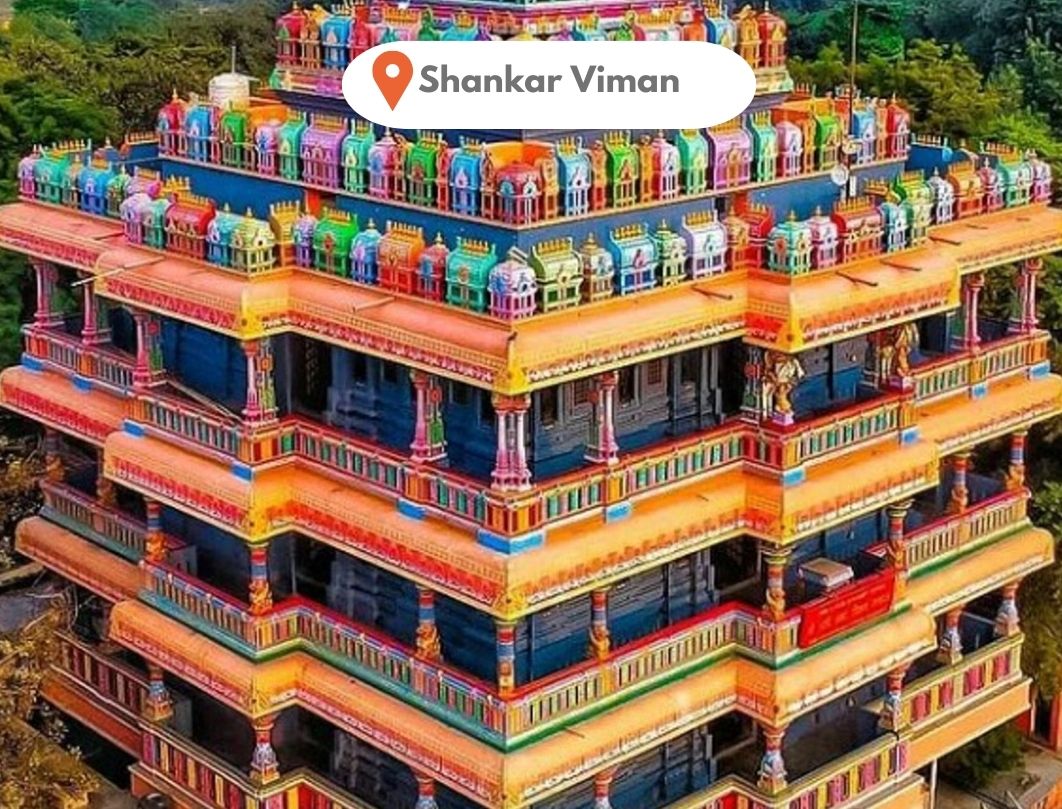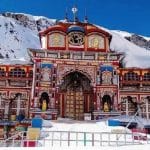Prayagraj Temple Tour
Prayagraj (formerly Allahabad), one of the oldest and most sacred cities in India, holds immense religious significance for Hindus. Nestled at the confluence of the Ganga, Yamuna, and Saraswati rivers (Triveni Sangam), this spiritual city is not only known for the Kumbh Mela, but also for its ancient temples, sacred ghats, and timeless legends. A temple tour in Prayagraj takes you on a soulful journey through mythology, devotion, and divine energy.
Whether you’re a pilgrim, history enthusiast, or spiritual seeker, here’s a guide to the most revered temples of Prayagraj that highlight the city’s rich spiritual heritage.
- 1. Akshayavat Tree Temple – The Eternal Banyan Tree
- 2. Bade Hanuman Ji Temple – The Reclining Hanuman
- 3. Alopi Devi Temple – The Vanishing Goddess
- 4. Kalyani Devi Temple – One of the 51 Shakti Peethas
- 5. Mankameshwar Temple – Wishes Fulfilled by Shiva
- 6. Dashashwamedh Temple – Commemorating Sacrifices
- 7. Shivkoti Mahadev Temple – The Lord of Infinite Energy
- 8. Nag Vasuki Temple – The Serpent God’s Abode
- 9. Lalita Devi Temple – Guardian Goddess of Prayagraj
- 10. Sankat Mochan Hanuman Mandir – The Problem Solver
- Bonus: Spiritual Experiences to Add to Your Temple Tour
- How to Plan Your Temple Tour in Prayagraj
- Conclusion
Prayagraj Temple Tour

1. Akshayavat Tree Temple – The Eternal Banyan Tree
Located inside the Allahabad Fort, the Akshayavat (meaning “Indestructible Banyan”) is believed to be immortal and finds mention in the Puranas and Ramayana. Devotees believe that Lord Narayana revealed himself here to a devotee who wished to witness the end of creation.
- Significance: Symbolizes eternity and salvation.
- Highlights: Accessible to the public only during the Kumbh Mela or by special permission.
2. Bade Hanuman Ji Temple – The Reclining Hanuman
One of Prayagraj’s most iconic temples, this shrine is unique as it houses a reclining idol of Lord Hanuman, partially submerged below ground level. Devotees believe that floods of the Ganga touch the idol every year as a divine blessing.
- Location: Near Sangam, adjacent to the Akbar Fort.
- Best Time to Visit: Tuesdays and Hanuman Jayanti.
3. Alopi Devi Temple – The Vanishing Goddess
A Shakti Peetha and one of the holiest temples in the region, Alopi Devi Temple has no idol. Instead, a wooden chariot is worshipped, symbolizing the mystical disappearance of Goddess Sati’s last remains.
- Unique Feature: The only temple in India where a deity is not in physical form.
- Spiritual Vibe: Powerful energy, especially among devotees of Shakti.
4. Kalyani Devi Temple – One of the 51 Shakti Peethas
Kalyani Devi is believed to be the place where Sati’s fingers fell. The temple is associated with strength, divine feminine energy, and healing.
- Importance: One of the three Shakti Peethas in Prayagraj.
- Festivals: Navratri is celebrated here with great devotion.
5. Mankameshwar Temple – Wishes Fulfilled by Shiva
Dedicated to Lord Shiva, this temple is known as the place where devotees’ deepest desires (mankamna) are fulfilled. A serene and lesser-known site, it’s ideal for peaceful meditation and prayer.
- Location: Near Saraswati Ghat.
- Spiritual Note: A quiet corner in an otherwise bustling city.
6. Dashashwamedh Temple – Commemorating Sacrifices
This temple is linked to the Dashashwamedh Yajna performed by Lord Brahma. Situated near Sangam, it’s a must-visit for those looking to experience the ritualistic side of Prayagraj’s spirituality.
- Experience: The temple often hosts Vedic yajnas and homas.
- Nearby: Close to the ghats for a combined spiritual circuit.
7. Shivkoti Mahadev Temple – The Lord of Infinite Energy
Also known as the Shiv Kaleshwar Mahadev Temple, this ancient temple is associated with Lord Shiva’s cosmic form and meditation practices.
- Aura: Deeply meditative and spiritual.
- Popular During: Shravan month and Maha Shivratri.
8. Nag Vasuki Temple – The Serpent God’s Abode
Located near the banks of the Ganga in Daraganj, this temple is dedicated to Nag Vasuki, the king of serpents. It’s believed that Lord Krishna himself paid homage here after defeating Kaliya.
- When to Visit: Nag Panchami, when thousands gather to worship.
- Cultural Angle: A symbol of peace between humans and nature.
9. Lalita Devi Temple – Guardian Goddess of Prayagraj
One of the Shaktipeeths, Lalita Devi is believed to guard the city. The temple is revered among Shaktas and pilgrims seeking protection and blessings.
- Legends: Mentioned in ancient texts like the Devi Bhagavata Purana.
- Atmosphere: Especially vibrant during Durga Puja and Navratri.
10. Sankat Mochan Hanuman Mandir – The Problem Solver
This lesser-known yet powerful Hanuman temple is often visited by devotees seeking relief from troubles and obstacles.
- Offerings: Sweets, sindoor, and oil.
- Spiritual Insight: Ideal for those going through hardships or seeking inner strength.
Bonus: Spiritual Experiences to Add to Your Temple Tour
- Morning Dip at Triveni Sangam
- Evening Aarti at Saraswati Ghat
- Attend a Gita discourse or Ramayana Katha
- Participate in meditation sessions at ashrams near the Sangam
How to Plan Your Temple Tour in Prayagraj
- Ideal Duration: 2–3 days for a relaxed spiritual circuit.
- Best Time to Visit: October to March (cooler weather & festive season).
- Getting Around: Auto-rickshaws, e-rickshaws, and cabs are easily available.
Conclusion
A temple tour in Prayagraj is more than just visiting shrines—it’s a journey through the spiritual DNA of India. From ancient legends to living traditions, every temple carries the echo of prayers that have been chanted for centuries. Whether you’re seeking blessings, peace, or cultural insights, Prayagraj welcomes every soul with open arms and divine grace.
Would you like this turned into a printable itinerary or included as part of a tour package for TripCosmos.co?





